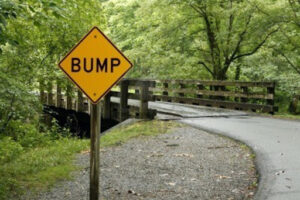My memories of crossing the White River on the Oil Trough Ferry are a mixed bag of nightmares and excitement. During my early childhood, my family lived in Memphis. And we frequently traveled to visit my grandparents. This meant first crossing over the Mississippi River on a multi-lane bridge high over the water.
But near our destination, we had another river to cross. White River is a wide, fast-moving tributary of the Mississippi that makes a 720-mile journey through the Ozark Mountains and arriving in the lower delta region of southern Arkansas. On its way, the river separates the town of Newark, where most of my family was born, from Newport, where I was delivered at a small medical clinic.
Ferry boats are more exciting than bridges. Both get us to the other side of the river. But ferry boats are more up-close and personal, and as a result, more dangerous. Hence my mixed bag of nightmares and excitement.
In the Book of Revelations, we read a vision of humanity, as we know it, finally reaching a conclusion. A conclusion that God decided on long before now. The vision includes the storm before the calm, the final judgment, and the perfect ending to a love story amid revolution. The story ends with reconciliation. God and creation find harmony. And like most great stories, there is a sequel.
Reconciliation is a lot of things. Most of them are closer to the nightmares of crossing the White River on a ferry than crossing the mighty Mississippi in a center lane. Most of all, reconciliation is a love story in the context of a revolution.
Jesus is the bridge for reconciling us all with God. Jesus restored Peter and Thomas, moving from denial and doubt to love and trust. Both are necessary for reconciliation, but both live on the other side of wherever we find ourselves. Separating us from where we are and where we long to be. Both love and trust are necessary for crossing over the other side of where equity lives and oppression cannot reside.
Latasha Morrison, in her book, Be the Bridge, writes that “The ultimate goal of Be the Bridge communities is to bring racial reconciliation.” However, she warns that crossing requires moving through the bridge-building steps.
Jesus said to Thomas, “Put your finger here, and look at my hands. Put your hand into the wound in my side.”
John 20:27
The Oil Trough Ferry consisted of a cable strung from one side of White River to the other and one cable on each end of the boat attached to rollers on the main cable. This simple contraption allowed us to cross without the current taking us somewhere else.
 By comparison, the bridge that allowed my family to safely cross the Mississippi River took years to build. Likewise, bridges of reconciliation take time. Skipping steps is a recipe for getting swept away by the currents of bias, guilt, and other emotions that keep us from reaching the other side.
By comparison, the bridge that allowed my family to safely cross the Mississippi River took years to build. Likewise, bridges of reconciliation take time. Skipping steps is a recipe for getting swept away by the currents of bias, guilt, and other emotions that keep us from reaching the other side.
There is a story found in John’s Gospel about reconciliation. One of the followers, Thomas, wasn’t in the room when Jesus appeared to the others after His resurrection. As a result, Thomas doubted that what Jesus said would happen actually happened.
Rather than dismiss Thomas as unfaithful and thus not worth making an effort, Jesus returned and invited Thomas to put his fingers on the scars left by the executioners.
Latasha writes this about Jesus and the subject of reconciliation:
Jesus didn’t just come to restore individual people; he came to break down systems of oppression, to provide a way for his kingdom to appear on earth as it is in heaven. He came so that we, his followers, could partner with him in restoring integrity and justice to broken systems, broken governments, and ultimately, broken relationships.
We have reached the last episode before the conclusion of our series, Bridges. I pray that each of us will consider how we participate in building bridges of reconciliation. And although we cross at different times and at different speeds, I pray that we safely travel to the other side where reconciliation is waiting.
We have a new button on the homepage of our website – Click here to watch. This button takes you to a viewer to allow you to join live or watch later in the week. We’re also live on Facebook and our newly launched YouTube channel. You can find these links along with more information about us on our website at FlintAsbury.org.
A reminder that we publish this newsletter that we call the Circuit Rider each week. You can request this publication by email. Send a request to info@FlintAsbury.org or let us know when you send a message through our website. We post an archive of past editions on our website under the tab, Connect – choose Newsletters.
Pastor Tommy
1 Most of the content for our series comes from Latasha Morrison, Be the Bridge: Pursuing God’s Heart for Racial Reconciliation. Yates & Yates and Penguin Random House, 2019.

